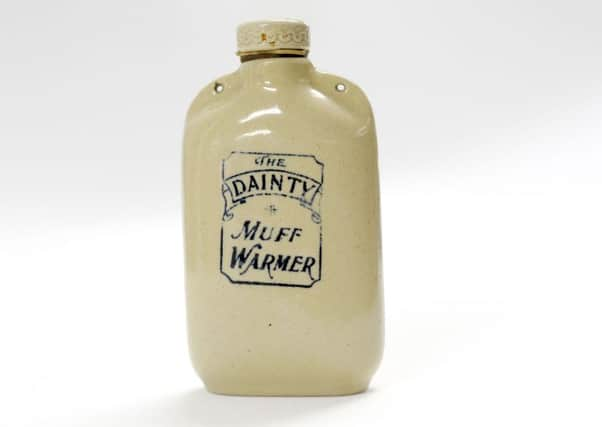Exhibit of the Week: Dainty muff warmer, Scarborough Collections


Come November, we turn up the central heating, dig out the lovely warm winter clothing – and for real luxury, you could pop one of those little hand warmers into your pocket.
There’s an absolute plethora of them out there, ranging from what now seems to be the fairly basic – those gel-filled plastic pouches with a tiny metal disc that you click to activate the warmth – through to the very high tech. We found a rechargable USB hand warmer online with three different heat settings which doubles up as a mobile portable power bank for your phone – a snip at just over £20!
Advertisement
Hide AdAdvertisement
Hide AdThey do lack a certain charm, though, compared to this little beauty – the ‘dainty muff warmer’, with its nicely patterned cap and little lugs on its shoulders with holes in to allow a string to be threaded through.
The muff – a tube of warm material, often fur, on a chain or ribbon – was worn around the neck and fell roughly to waist level where the wearer could easily slip their hands in during a cold snap. They seem to be eminently practical pieces of kit, especially for those of us who struggle with gloves; we do wonder why they fell so dramatically out of fashion after being popular from the medieval period (when they were called snuffkins, skimskyns or snoskyns) until at least the late Victorian and early Edwardian period and, in very fashionable circles, well into the 20th century.
Those wishing to gild the lily could slip a small hand warmer in – these had been around since medieval times, often little silver or ceramic bottles filled with hot water. But this particular version was a very practical option, being stoneware, which would both hold the heat for a lot longer than metal or finer pottery, and be hardwearing. It’s essentially a miniature version of the stone hot water bottle which ruled the roost until the rubber version became more common in the early 20th century.
Our little warmer is believed to have been made by a company known, rather confusingly, as S Maw, Son, & Sons (thank goodness the great grandchildren didn’t join the business).
Advertisement
Hide AdAdvertisement
Hide AdMaw’s had been founded in 1807 in London’s Aldersgate Street by a Lincolnshire man called George Maw who went into business with his wife’s cousin. The pair produced surgical and pharmaceutical supplies including an early earthenware inhaler and – a bit of a novelty item – a ‘perfume pistol’: an alarmingly realistic-looking gun with an India rubber stock which was filled with perfume and squeezed to spray the scent from the barrel.
By the early 1900s, Maw’s was making ceramic foot warmers as well as hand warmers, baby feeders, toothpaste pots and more.
In 1904, a lady called Ada S Ballin, a magazine editor, proprietor and writer on women’s health, commented in a periodical called Womanhood that: “The Thermos Hot-water Muff Warmer is a delightful little invention which is sure to be appreciated by my readers.”
Interestingly, though, while these days we tend to think of the muff as a particularly feminine garment, it hasn’t always been so – a late 17th century writer tells us that they were ‘originally used only by women; at present, however, men also carry them. The finest muffs are of marten, the less expensive ones of squirrel. The muffs for horsemen are of otter or tiger’.
Advertisement
Hide AdAdvertisement
Hide AdIt was a long-lasting fashion, too: Dutch artist Jan Lievens painted a portrait of an elderly gentleman warming his hands in a luxurious fur muff in the mid-1600s, while around a century later Jean-Etienne Liotard portrayed a male dignitary wearing a muff.
The dainty muff warmer is part of the Scarborough Collections, the name given to all the museum objects and artwork acquired by the borough over the years, and now in the care of Scarborough Museums Trust. For further information, please contact Collections Manager Jennifer Dunne on [email protected] or 01723 384510.